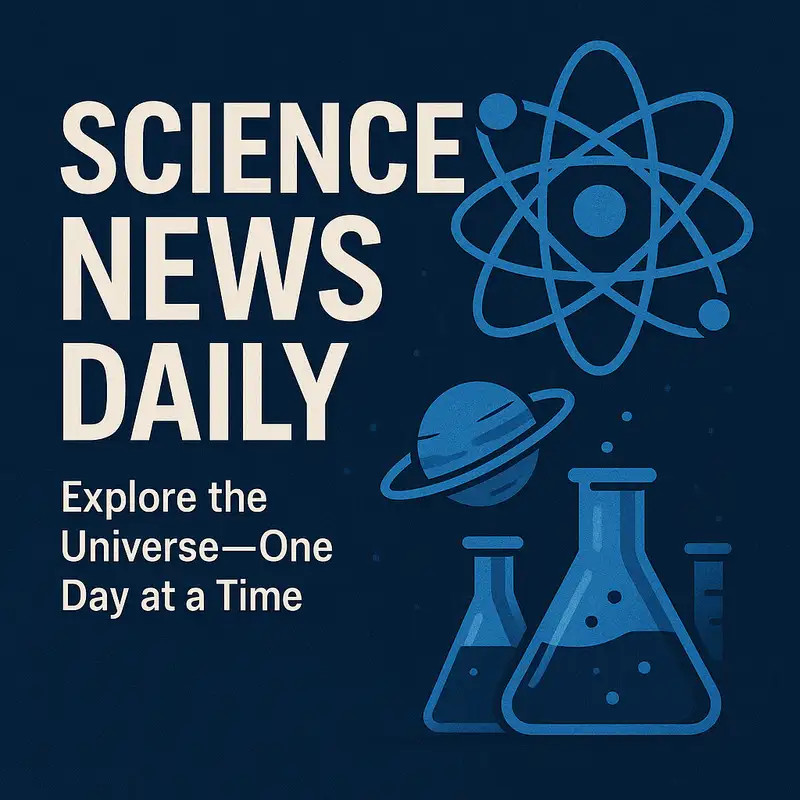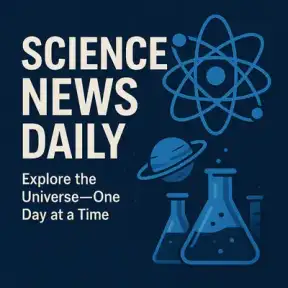🔬 Scientists Crack the Code on Chronic Pain - Plus Universe Simulations on Your Laptop Revealed
Welcome to Science News Daily, where we explore the latest breakthroughs shaping our world. I'm your host, and today we're diving into some fascinating discoveries that could change how we understand pain, our food systems, and even the universe itself.
Let's start with a breakthrough that could offer hope to millions suffering from chronic pain. Scientists have discovered a remarkable brain circuit that can essentially switch off chronic pain signals. They've identified specific neurons called Y1 receptor neurons that act like a neural switchboard in our brains. These cells can override pain signals when our survival instincts kick in - like when we're hungry or facing danger. Think about it: your body naturally prioritizes survival needs over pain. This discovery could lead to personalized treatments that target pain right at its source in the brain, rather than just masking symptoms with medications.
Shifting from human health to planetary health, researchers are sounding an alarm about our global food supply. New studies reveal that modern agricultural methods are seriously damaging the natural resilience of our soils. Soil resilience is basically the earth's ability to resist damage, adapt to changes, and recover from stress. When we weaken this natural resilience, we're essentially undermining the foundation of our entire food system. The researchers suggest using resilience theory approaches to find practical solutions, though there will likely be trade-offs to consider.
Now, let's look up at the skies where scientists have achieved something remarkable with supercomputers. They've successfully recreated California's 2020 Creek Fire, which burned so intensely it created its own thunderstorm. These pyrocumulonimbus clouds are like volcanic eruptions made of fire - they spew lightning and completely reshape local weather patterns. For years, scientists struggled to model these fiery storms, but this breakthrough could help us better understand and predict extreme wildfire behavior.
From the dramatic to the delicate, researchers have finally solved a century-old musical mystery. Using advanced sensors, they've proven that pianists really can change a piano's sound through touch alone. The scientists mapped the tiny movements that create different timbres, and listeners could actually hear the intended tones. This finding beautifully bridges art and science, giving us measurable proof of what musicians have always known - that expressive touch is real and quantifiable.
In a lighter note, quite literally, physicists recently won an Ig Nobel Prize for perfecting the science of cacio e pepe pasta. Their study revealed how starch and temperature control can transform a lumpy sauce into creamy perfection. It's a delightful reminder that great science sometimes starts with everyday problems - like making the perfect dinner.
Let's touch on some concerning health research. A study of fatal car crash drivers found that over 40 percent had active THC in their blood at levels well above legal limits. The average concentration was 30.7 nanograms per milliliter, and these numbers remained consistently high over a six-year period, even after recreational cannabis legalization. This data raises important questions about impaired driving and public safety.
On the topic of longevity, researchers have delivered some sobering news about human lifespans. A landmark study suggests we may never see average lifespans reach 100 years. While life expectancy improved rapidly in high-income countries during the first half of the 20th century, that progress has significantly slowed since the 1930s.
But here's some encouraging health news: scientists at UC Irvine have discovered that a simple dietary change could reverse a common liver condition. Adding dietary fiber, specifically a type called inulin, can alter gut bacteria in ways that protect the liver from sugar-related damage. The researchers found this approach can both prevent and even reverse liver disease caused by dietary fructose.
In the realm of quantum computing, Caltech has shattered records by creating a 6,100-qubit quantum array. Unlike classical computer bits that can only be 0 or 1, qubits can exist in both states simultaneously. This massive increase in qubits brings us closer to quantum computers that could tackle some of the toughest challenges in physics and chemistry.
Let's venture to Mars, where scientists have discovered that the Red Planet is far more dynamic than we thought. Using deep learning analysis of thousands of satellite images, researchers found that Martian dust devils can race at hurricane-like speeds of up to 160 kilometers per hour. These powerful winds play a crucial role in lifting dust into the atmosphere and shaping Mars' weather and climate.
Finally, in a development that could democratize cosmic research, scientists have created a way to simulate the entire universe on a laptop. This new emulator allows cosmologists to process enormous, complex datasets using just standard computing equipment, making universe exploration more accessible than ever before.
And in an unexpected twist, scientists accidentally created what they're calling a rainbow laser while developing LiDAR technology. This single chip can generate multiple laser colors simultaneously, which could revolutionize data centers and communications with faster, cleaner, and more efficient light sources.
That wraps up today's Science News Daily. From brain circuits that control pain to cosmic simulations on laptops, science continues to surprise us with discoveries both profound and practical. Join us tomorrow as we continue exploring the frontiers of human knowledge. Until then, stay curious.

